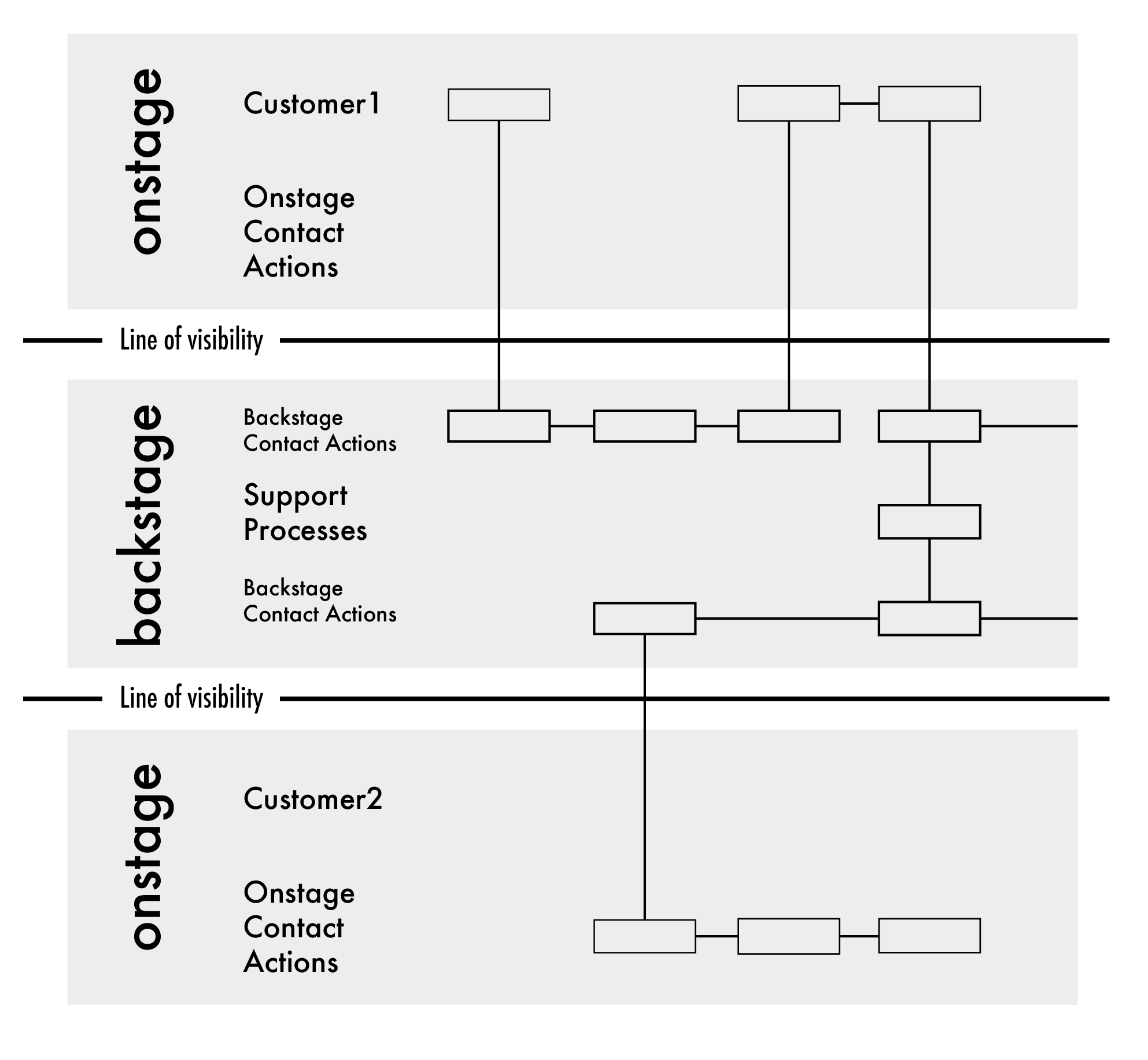Service Design Methods and Digital Technologies
Service design is basically the application of design thinking and design methodology to immaterial products.” says Birgit Mager, President SDN, “We try to improve and innovate services in a way they really make sense to the users, easy to use and users like using them.”
Founded over interdisciplinary approach, service design has been developed by creating a framework of processes, methodologies and theoretical statements, applied for the human need of services. Over the last 20 years with the advent of digital technologies, we started to talk more intensely about the service design. This field emerged as applied science, which evolves – live and learns through application.
Image 1: A traditinal service design blueprint
Service design field expands in many different directions. As with the changing nature of the services, a need for a more detailed and descriptive model for the services has risen. New directions require generating new tools or adjustments on existing tools to the new service design fields. Tools such as customer journey, story boards, persona profiles, and service blueprints are traditionally used to document, visualize and analyze the services. Among them, the service blueprint is a fundamental tool used to establish clear communication between stakeholders. However, digital technologies have affected the design and implementation of services and created a demand for more detailed and reconstructed blueprints to visualize services.
Initially, the service blueprint method was introduced by Lynn Shostack to visualize the elements of the customer interactions at a service, organized similarly to the production of theater plays. Shostack’s method labels “onstage” the areas where the customer sees and interact with the service, whereas used the label “backstage” for the corresponding provider action areas that the customer does not see. These areas were marked and separated with the line of visibility, the line determines the limit of detail in an effort to keep the customer journey as simple as possible, by limiting the visibility of actions from the customer perspective.
Although service design keeps changing and adapting to the latest technologies and thus, to human behavior. Assisted by digital technologies such as cloud computing, internet of things, artificial intelligence and big data, consumers and products are becoming more flexible. For example, cloud communication has enabled multiple actors to interact simultaneously over the same service, and demonstrate different actions, needs, and desires.
Image 2: Multiple Actors blueprint
In another example, Lee and Forlizzi propose an adaptive service design based on customer preferences and experience over time:

Image 3: A service blueprint that describes how products and service can be adapted to users’
changing experiences. (Min Kyung Lee, Jodi Forlizzi)
Service design blueprint is used to understand cross-functional relationships and align frontstage and back-stage processes. As the technologies enable new services, they also define an area to explore and develop in the service design tools. New visualization methods needed, and new communication strategies must be defined for these digitally-enabled possibilities.
References:
Birgit Mager. Introduction to Service Design. https://servicedesigntools.org/resources
Min Kyung Lee, Jodi Forlizzi. Designing Adaptive Robotic Services
Spraragen, S. and Chan, C. Service Blueprinting: When Customer Satisfaction Numbers are not enough. Proceedings of International DMI Education Conference.
If you have questions or comments you can contact with us.



